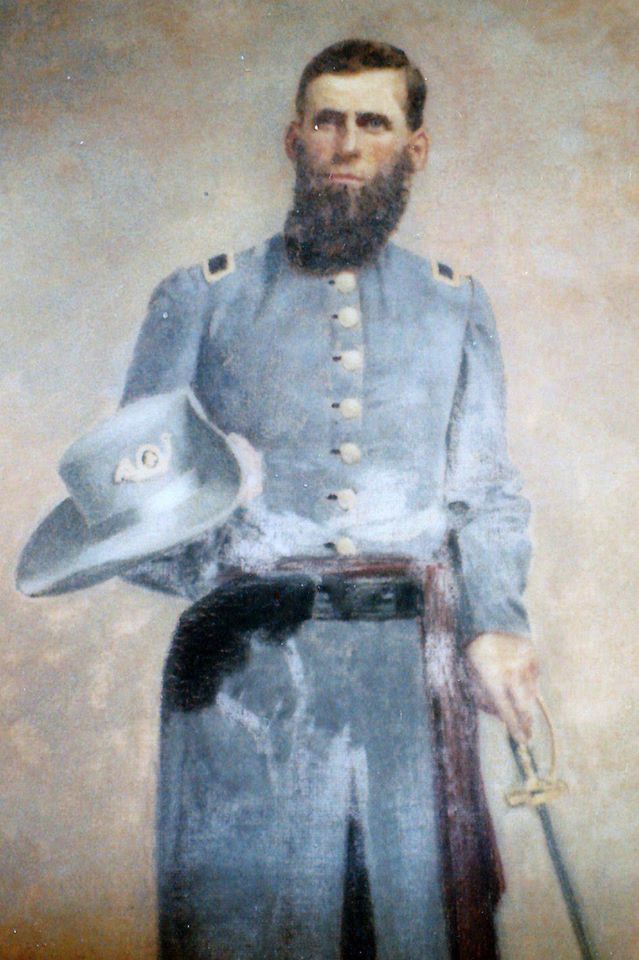
Second Lieutenant Bryan Trippe Bonner
Company I (the “Pamlico Rifles”), 4th Regiment N.C. State Troops
This image of Second Lieutenant Bryan Trippe Bonner, Company I (the “Pamlico Rifles”), 4th Regiment N.C. State Troops, is a painting, based upon an original ambrotype or ferrotype. The artist tried to remain faithful to the painting’s details, so much so that he rendered the “4” inside the infantry bugle on Bonner’s hat in reverse mirror, as it appeared on the original image.
Bonner farmed in the Durham’s Creek district of Beaufort County with his wife, four small children, and ten slaves. He enlisted in the “Rifles” on June 25, 1861, and was appointed second lieutenant.
Bonner was frequently ill during his service, particularly during early 1862. He submitted a resignation in May 1862, which was returned by his division commander, Major General D.H. Hill, with the sarcastic notation that “Battle discloses many infirmities of mind and body.” Bonner submitted a second resignation on June 18, endorsed by a physician who diagnosed him with “Chronic Enteritis, in consequence of which there is much emaciation and prostration of strength,” and that “he is in my opinion unfit for duty.” In a lengthy endorsement of the second resignation, Captain William T. Marsh of Company I observed, after examining the company’s morning reports, that Bonner had reported for duty on only forty of the previous 176 days. Marsh further observed that “my knowledge of his general ill health and the character of the man –indeed [illegible] me to believe that possibly he does not deserve the imputation cast upon him.” General Hill endorsed the second resignation without comment, and the resignation was accepted on July 14, 1862. There are no further military records for Bonner.
Bryan Trippe Bonner (December 17, 1825-December 7, 1889) is buried in the Bonner Cemetery, south side of the Pamlico River, Beaufort County.
(In Major General’s D. H. Hill’s report on the operations of his division in the Invasion of Maryland and the Battle of Sharpsburg, he lists, among other officers of the 4th North Carolina “greatly distinguished for their courage” in the battle “[B. T.] Bonner.” I have found no other information that Bryan T. Bonner served with the 4th North Carolina after his resignation was accepted on July 14, 1862. The brackets suggest an interpolation into Hill’s text, and it is my opinion that the Bonner he meant was First Lieutenant Henry Bonner, also of Company I. Henry served with the 4th North Carolina throughout 1862.)
Image: Polaroid, in author’s possession.
Source Note:
1860 U. S. Census, Durham’s Creek, Beaufort County, North Carolina, population schedule, page 46, dwelling 335, family 335, B.T. Bonner household; 1860 U.S. Census, Durham Creek, Beaufort County, North Carolina slave schedule, page 19; Manarin et. al., North Carolina Troops 4:96, 695; Official Records, XIX, Part 1: 1029; service record files of Bryan T. Bonner, 4th Regiment N.C. State Troops Troops, Compiled Service Records of Confederate Soldiers from the State of North Carolina (M270), RG109, NA; http://www.findagrave.com/cgi-bin/fg.cgi?page=gr&GSln=BON&GSpartial=1&GSbyrel=all&GSst=29&GScntry=4&GSsr=1481&GRid=11332383&
